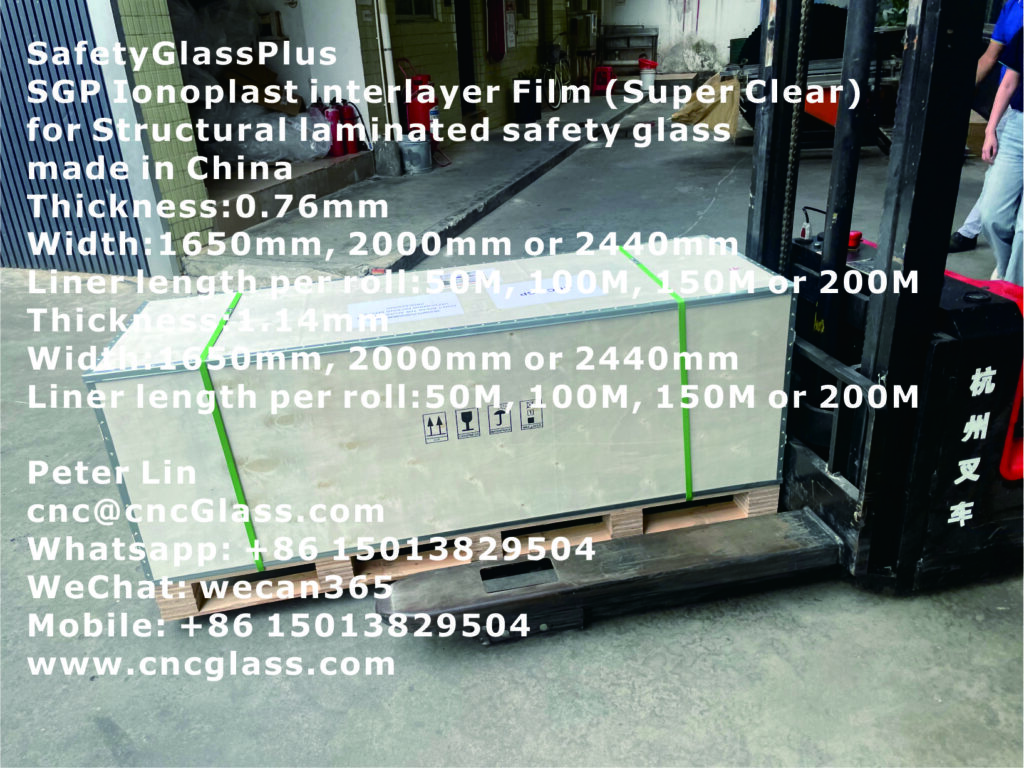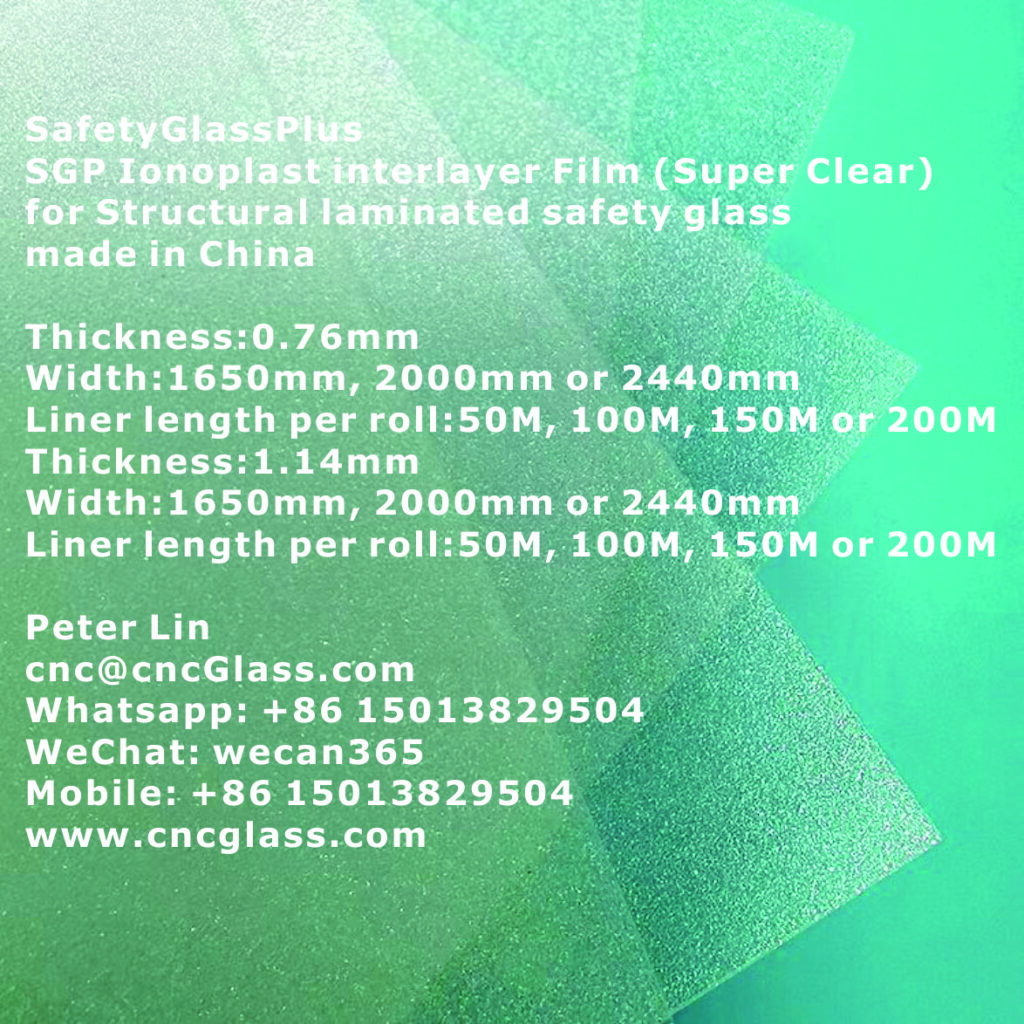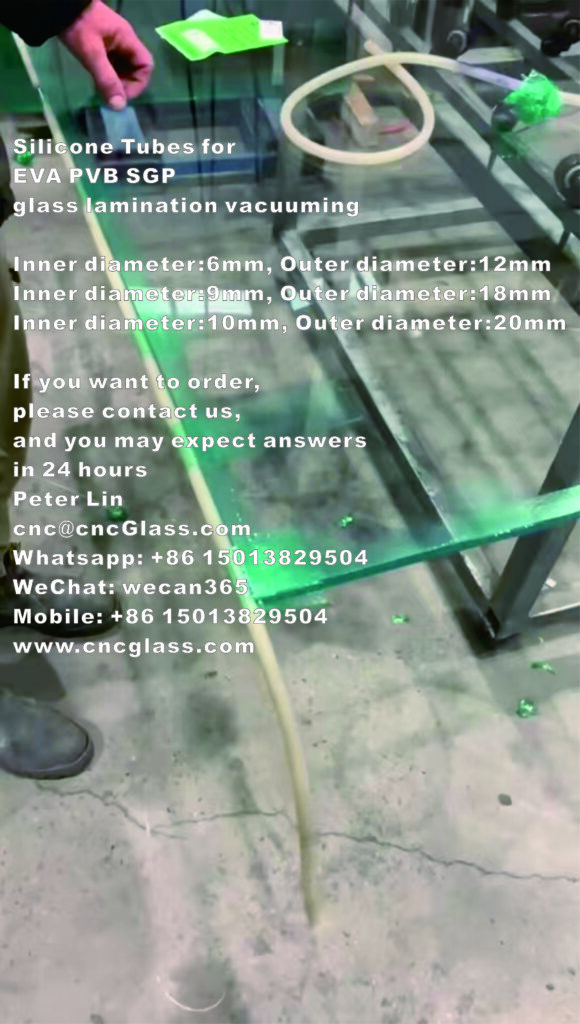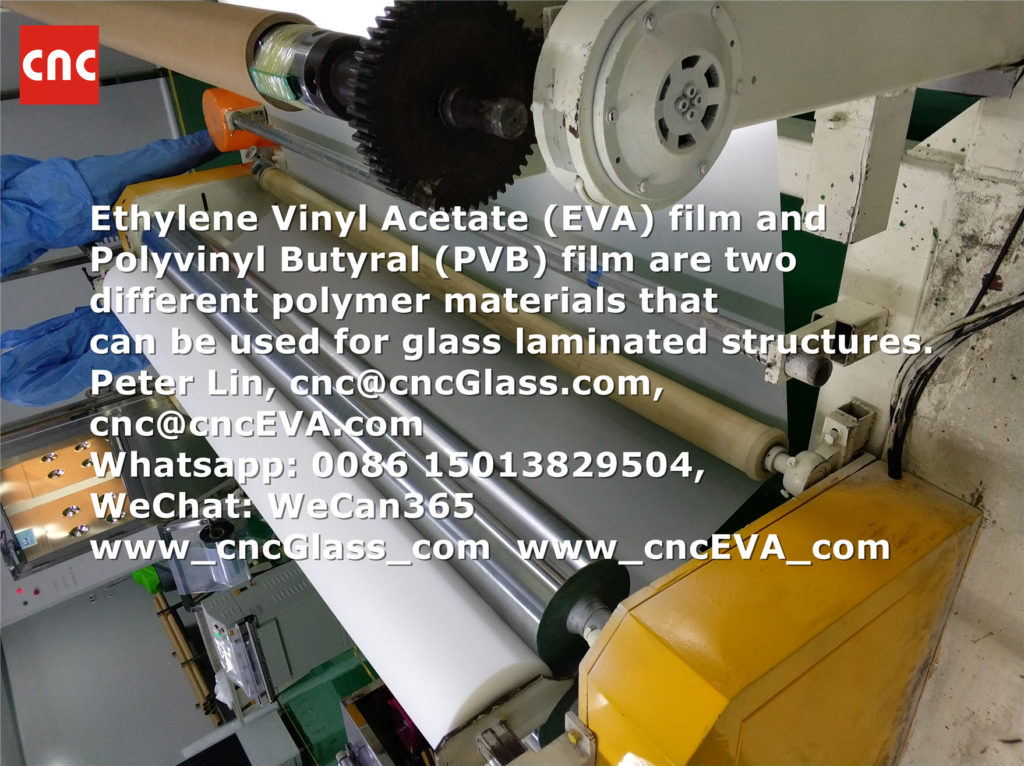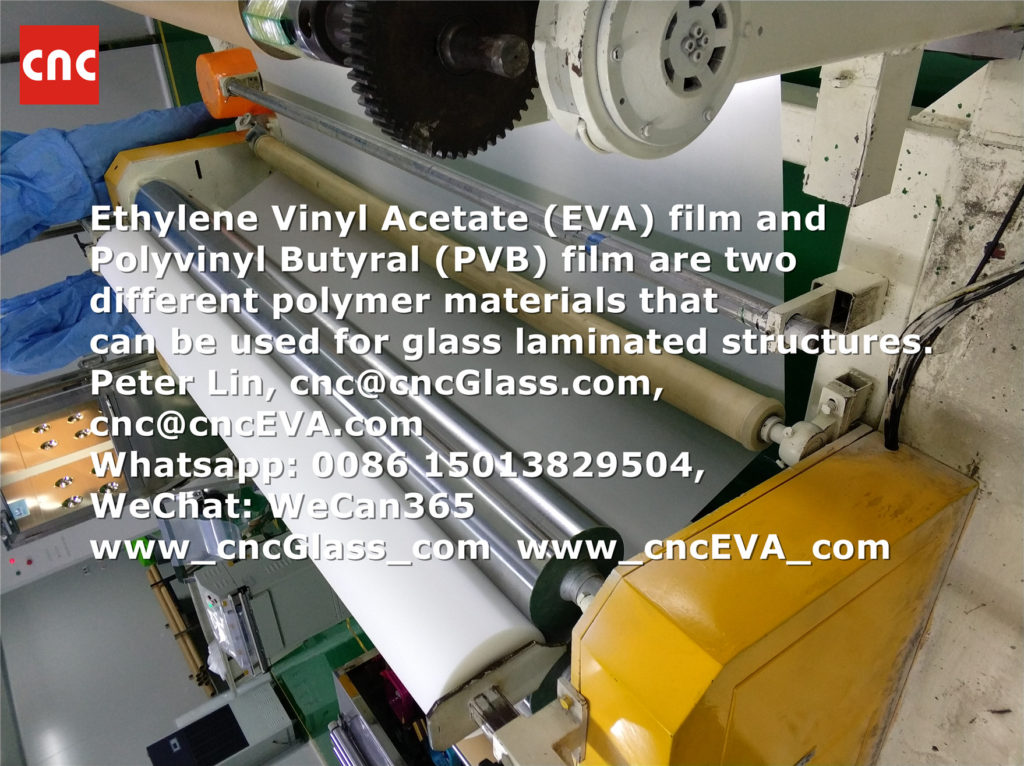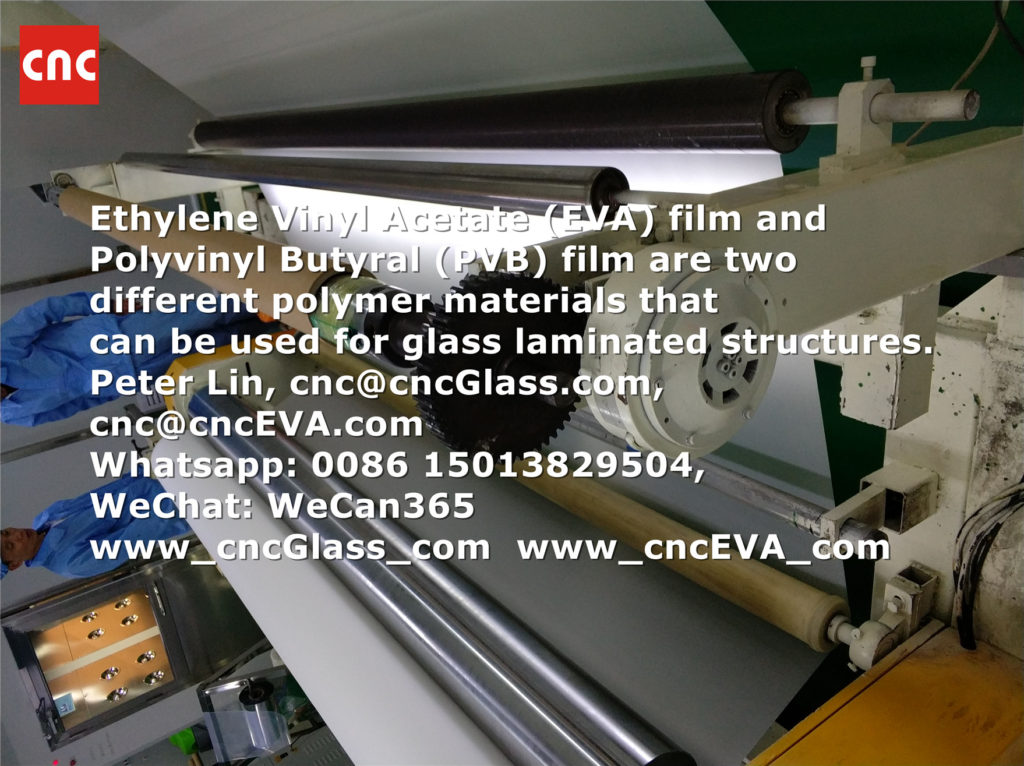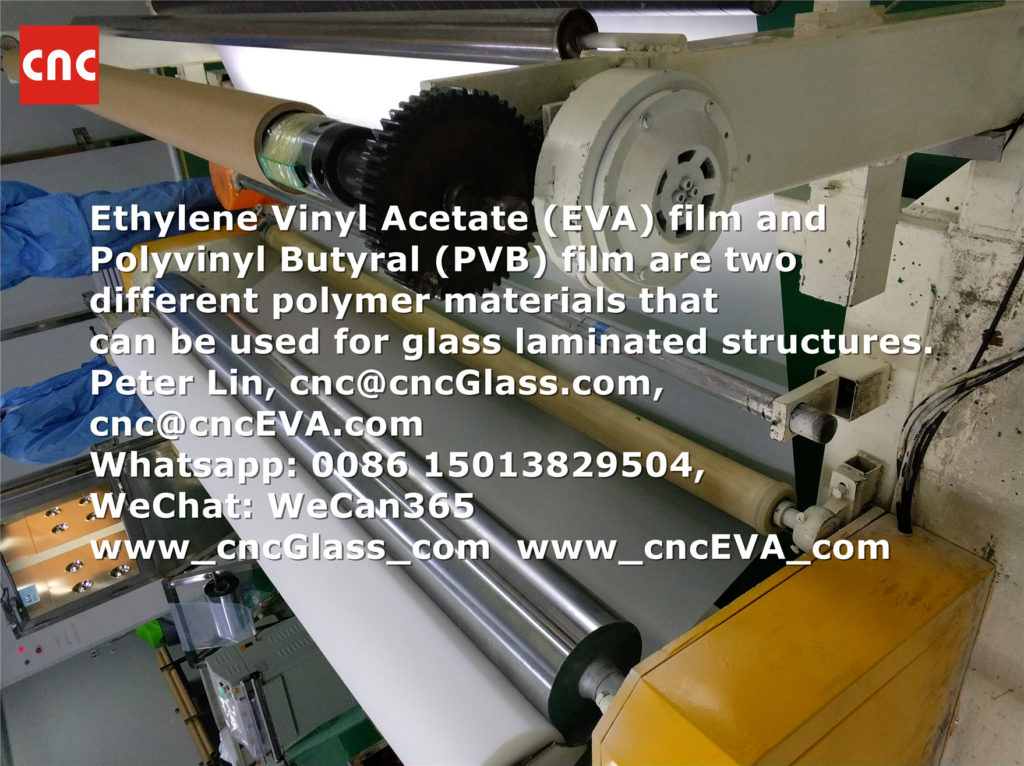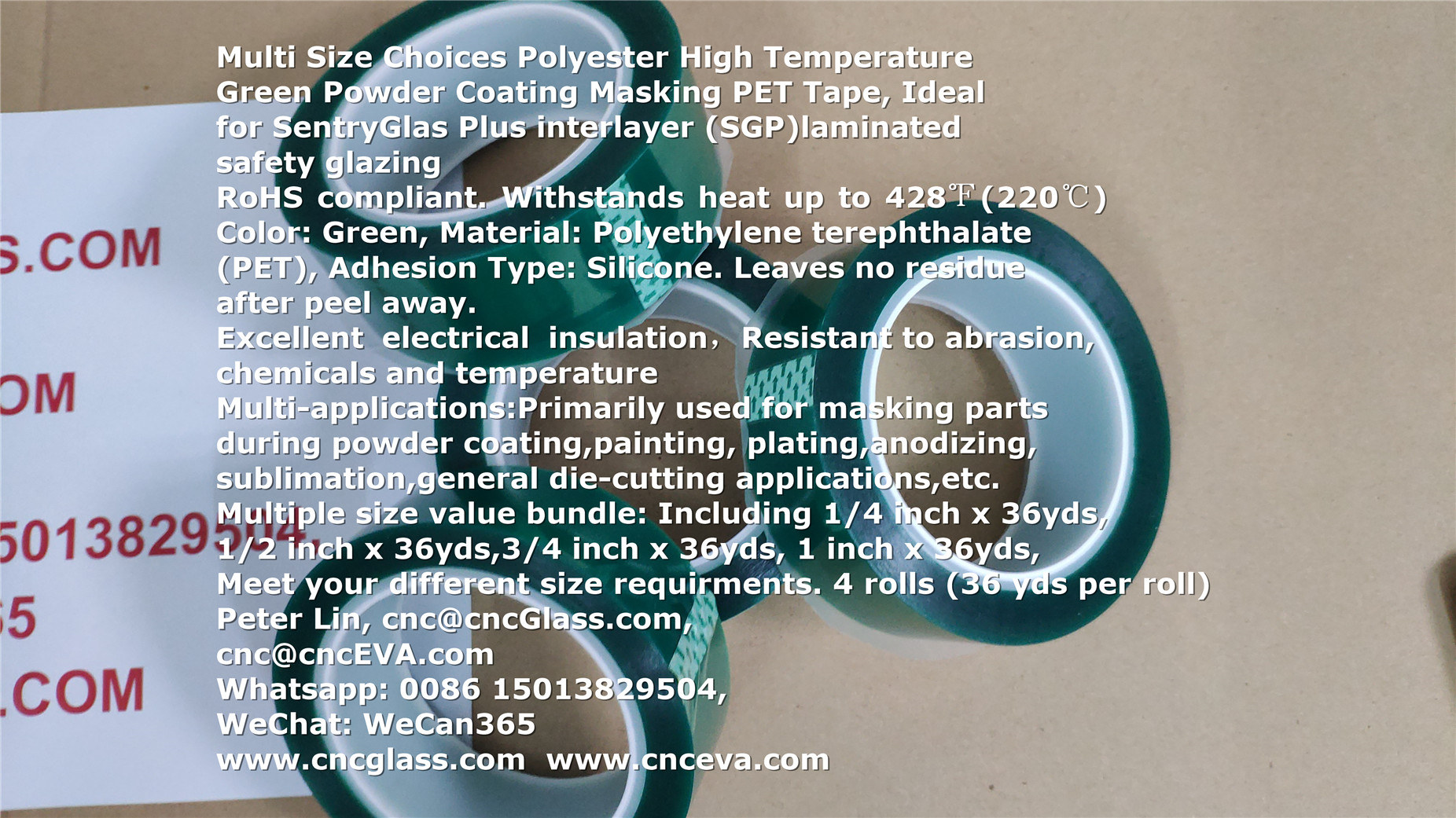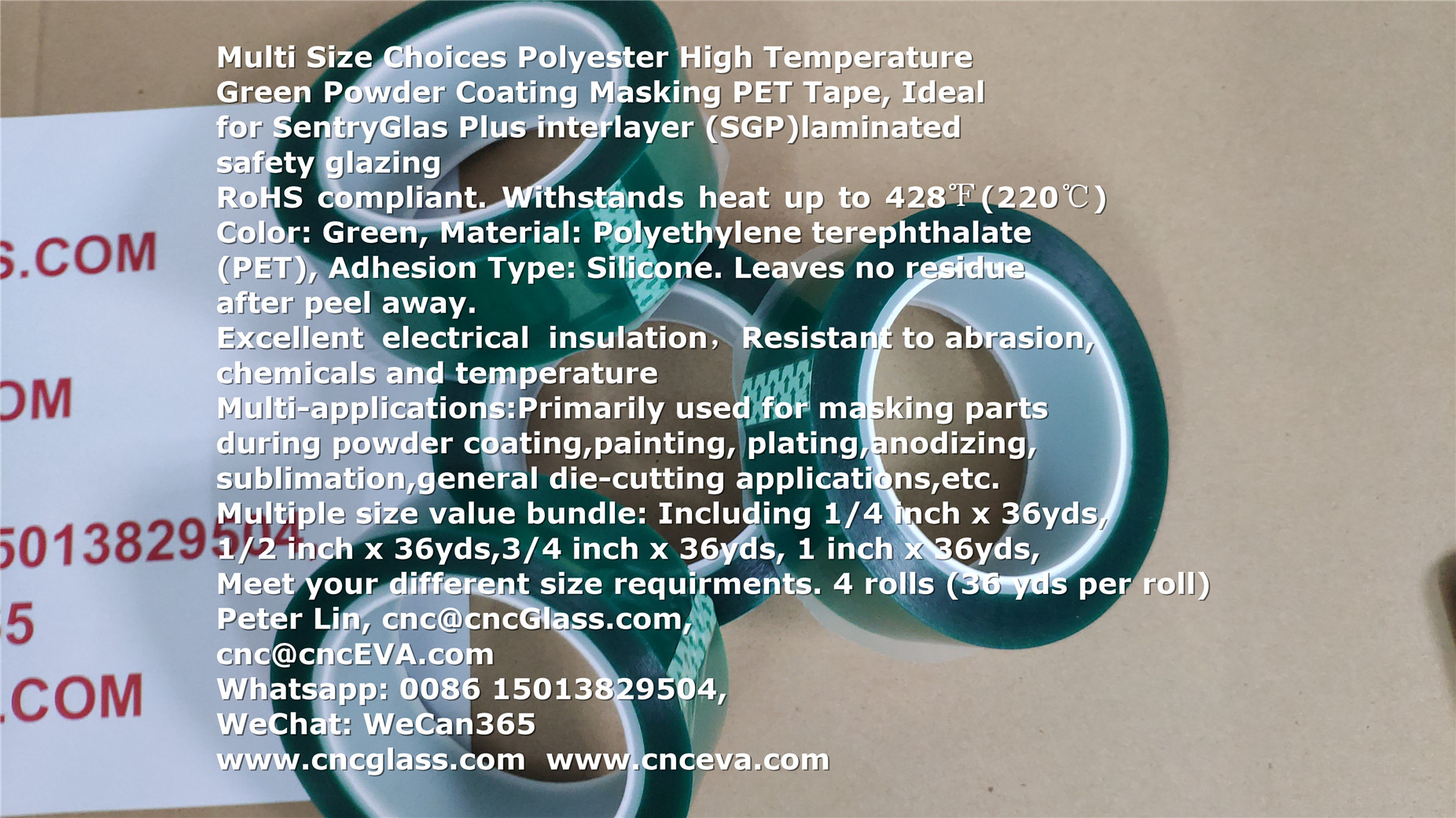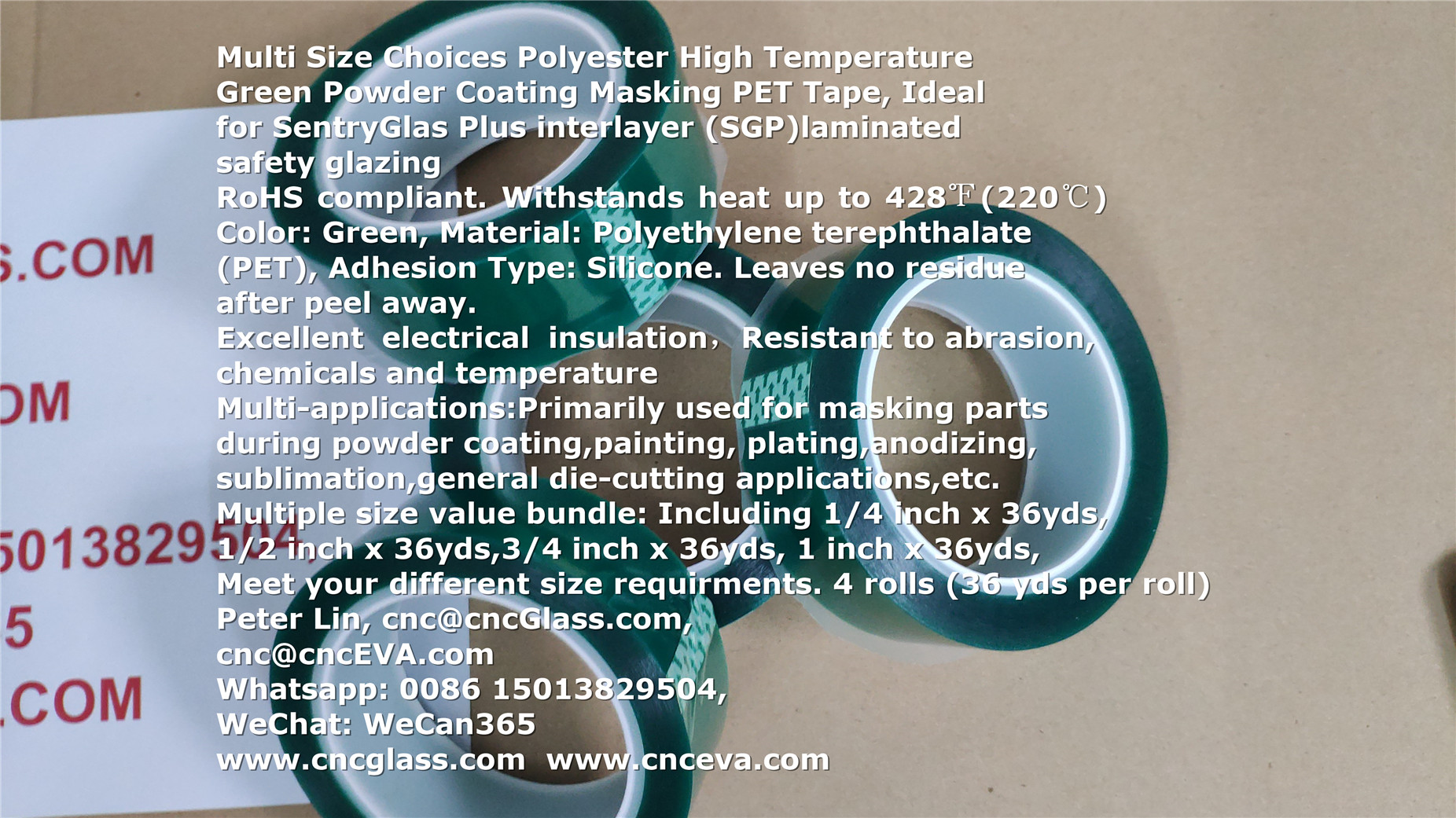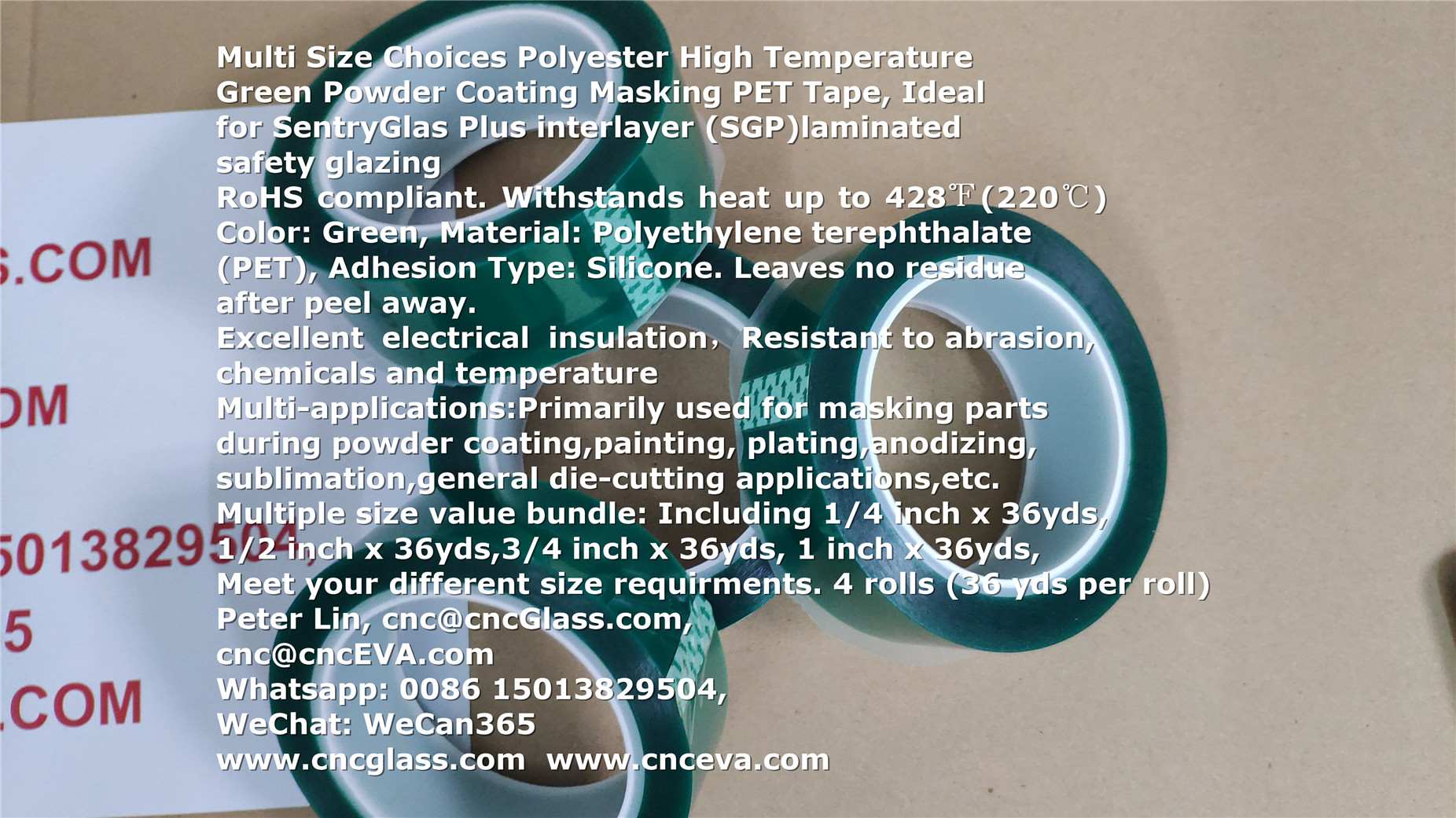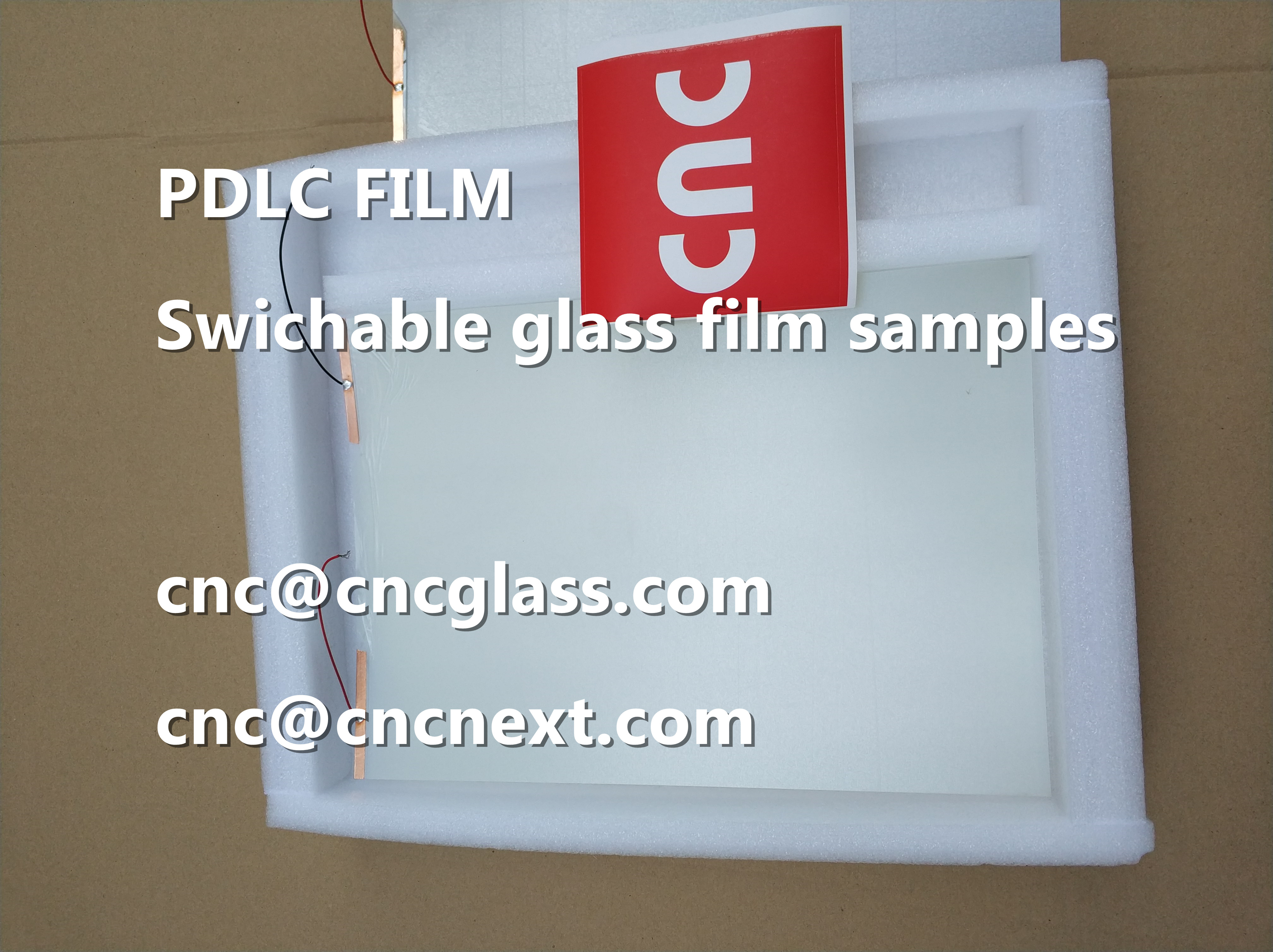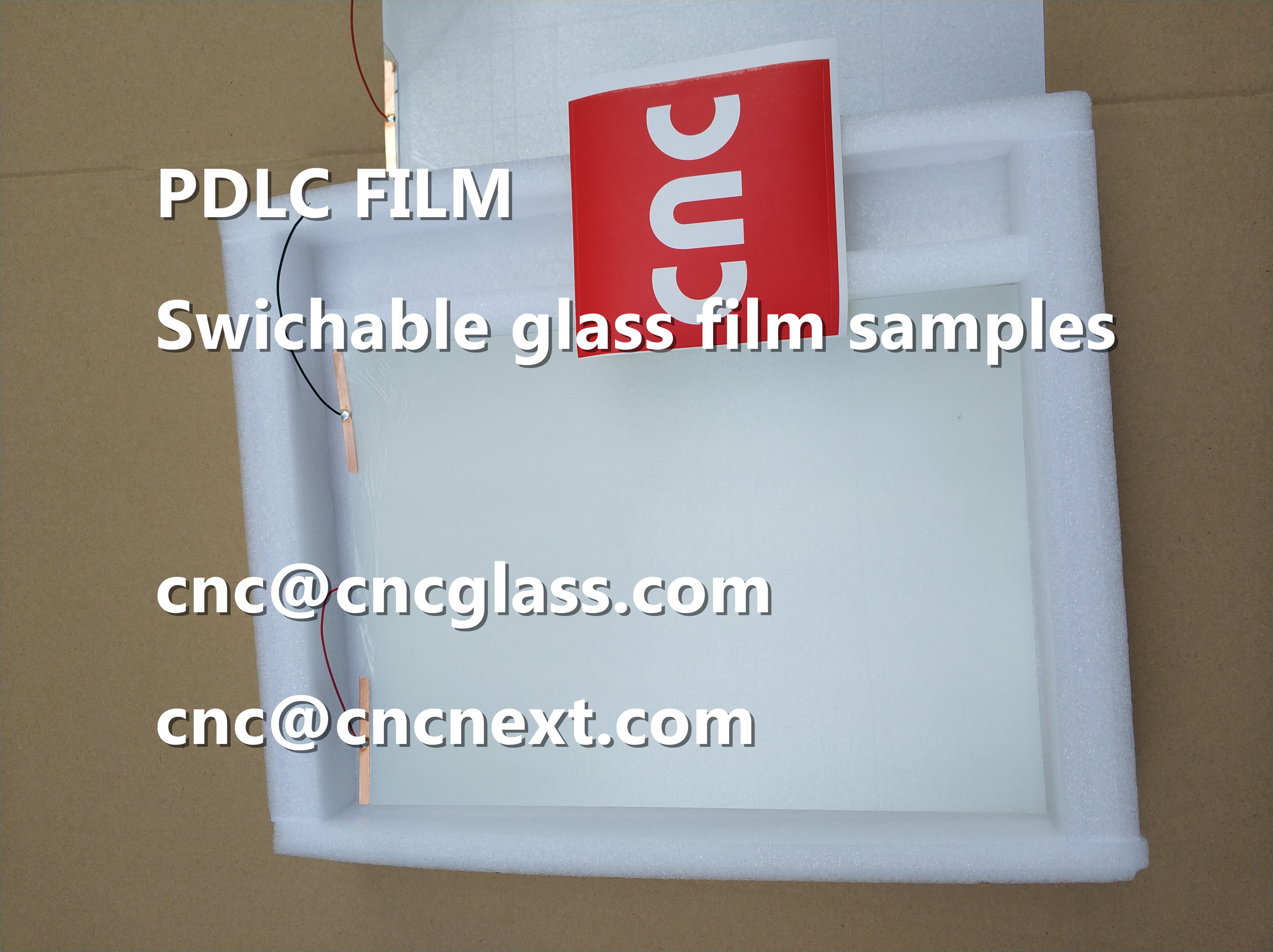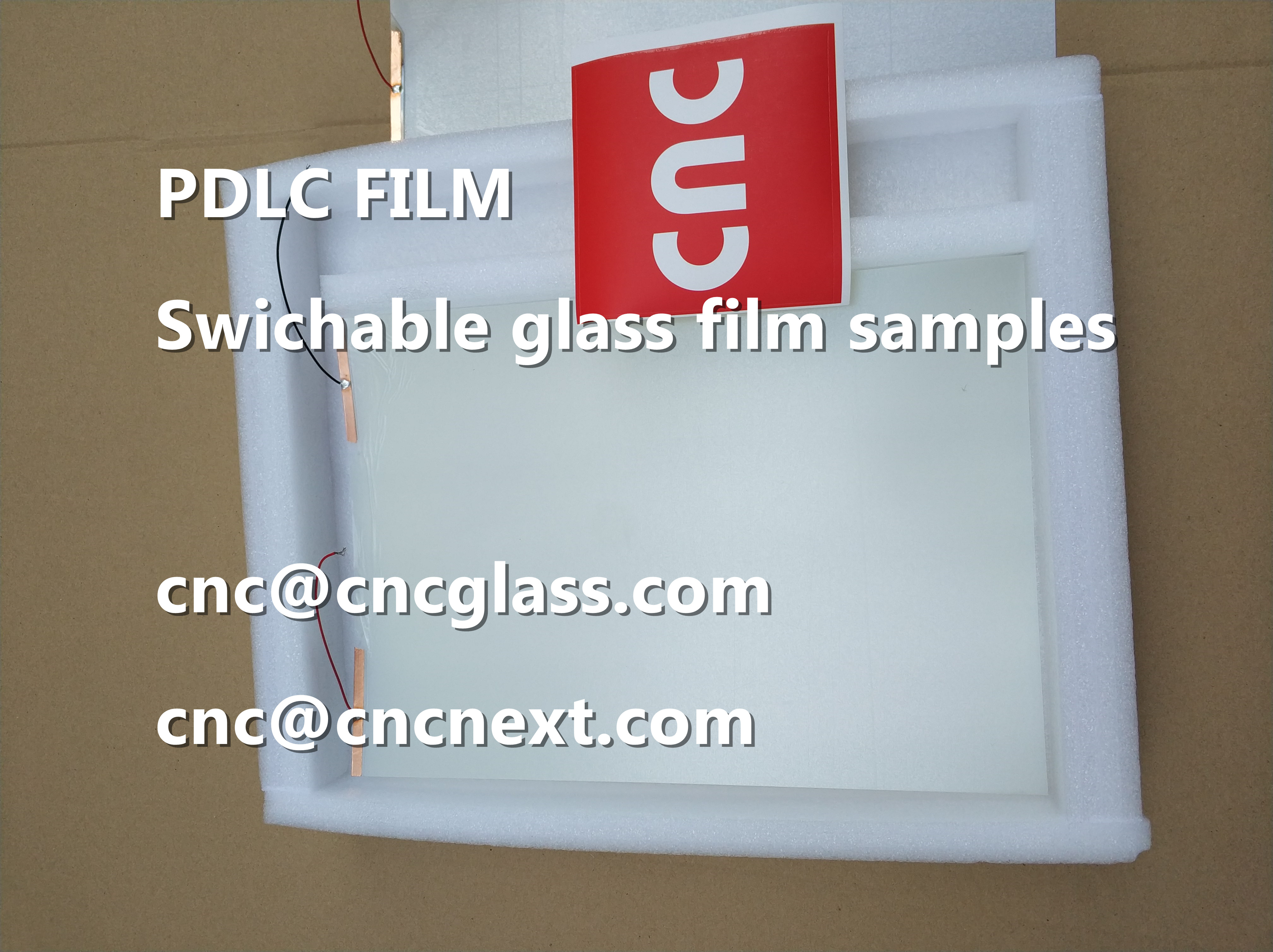Ethylene Vinyl Acetate (EVA) film and
Polyvinyl Butyral (PVB) film are two
different polymer materials that
can be used for glass laminated structures.
Peter Lin, cnc@cncGlass.com,
cnc@cncEVA.com
Whatsapp: 0086 15013829504,
WeChat: WeCan365
www_cncGlass_com www_cncEVA_com
Ethylene Vinyl Acetate (EVA) film and Polyvinyl Butyral (PVB) film are two different polymer materials that can be used for glass laminated structures. PVB has been the reference material for the glass lamination on building construction and transportation industries for many years. EVA is challenging current PVB as a laminated material because of some advantageous properties. In fact is a good material also for such type of applications, and is able to fulfill all the key properties that are required to PVB today. Not just that, it is also able to overcome some of the drawbacks of the PVB, outperforming PVB.
Some of the excellent properties of EVA have been already proved in the photovoltaic market. In that market, EVA demonstrated that fact has been already proved by the millions of squared meters of EVA used in photovoltaic. EVA is the “king” material used for the lamination and construction of photovoltaic modules, to produce energy for long periods of time under extreme operation conditions. At this point we should remember that the photovoltaic modules are being produced and sold with 20 year warranty period. Currently NO other materials have demonstrated to be much more efficient than EVA for such type of applications.
Peter Lin, cnc@cncGlass.com,
cnc@cncEVA.com
Whatsapp: 0086 15013829504,
WeChat: WeCan365
www_cncGlass_com www_cncEVA_com
EVA as well as PVB are thermoplastic polymers with some inherent elastic and natural adhesive properties. Compared with the other ones, rigid thermoplastic materials, at room temperature these ones look as “chewy gummy” products. In that sense, they are different from the rigid form thermoplastics and that is why they are named as “soft” polymer materials.
Although both are thermoplastic materials, they are different, mainly because their chemical structures are different, as you can notice in these figures:
From their chemical structures, we can appreciate that PVB basically has got an only basic unit that repeats m times in the polymer chains while EVA has got two. EVA is composed of two different repetitive units, depending on the number (n times in one case and m in another) and depending on how they are distributed into the molecular chains they could give to EVA different properties and performance. According to EVA’s molecular composition we can see different types. For this reason, EVA can be used in an extended range applications because is so much functional thermoplastic than PVB.
Peter Lin, cnc@cncGlass.com,
cnc@cncEVA.com
Whatsapp: 0086 15013829504,
WeChat: WeCan365
www_cncGlass_com www_cncEVA_com
